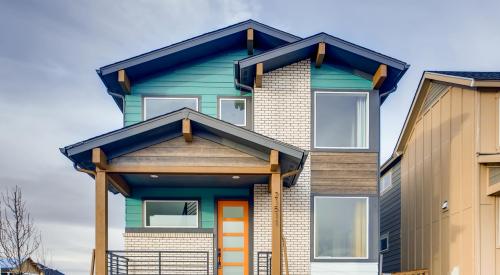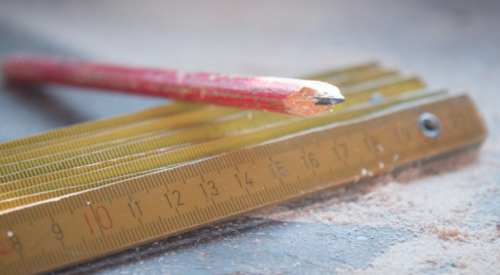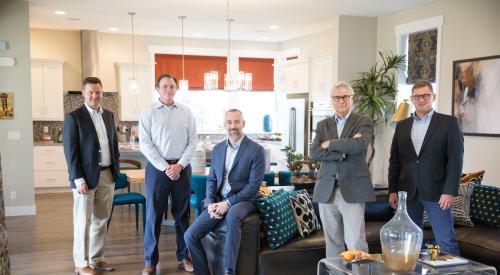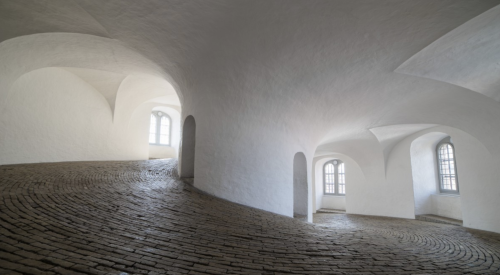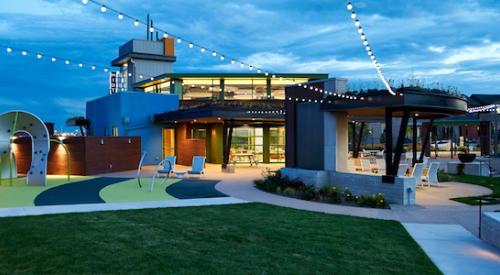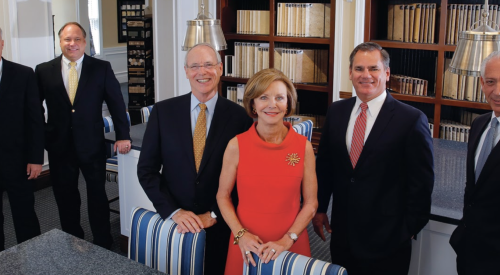Some home building companies are in business to satisfy their customers, while others want to build zero-defect homes. Boulder, Colo.-based home builder McStain Enterprises is looking at a much bigger picture: its mission is "Building a Better World."
One of the basic tenets of McStain’s mission is to develop and build in a sustainable partnership with the natural environment—something the organization has done all along, according to president and CEO Tom Hoyt. He and his wife Caroline, who is co-founder and principal designer, have been residential developers for 35 years. "One of the biggest impacts being made to the landscape is in the residential development business," says Hoyt. "We think that brings with it an obligation to try and do a good job." Along with respect for the land, McStain has a formally stated commitment to building neighborhoods that satisfy the physical and emotional needs of homeowners, and to treating customers, employees, associates and the overall community with integrity.
McStain has always run counter to the mainstream housing market, Hoyt says. "In the early years, what distinguished us was probably architectural design. We didn’t understand [the energy] business at all; we had to learn that." As the company matured, it gained a reputation for conscientious land planning that recognizes the natural shape and flow of the site, and architecture that accommodates historical context and topography.
McStain communities are typically 50 percent higher in density than conventional subdivisions in the Boulder market, with a mix of single-family homes of various sizes, townhouses and condominiums. Hoyt believes the product mix "builds a more sustainable community over the long term. For instance, it’s much more likely to provide a stable school population rather than the big attendance spikes that occur because everybody’s in the same demographic."
McStain participates in the Built Green program, funded by the Governor’s Office of Energy Conservation and developed by several agencies and groups led by the HBA of Metropolitan Denver. One of the program requirements is that recycled and engineered building products must be used in the construction of new homes. "What’s so powerful about [the program] is that you’re talking about sustainable materials, long-term energy costs, indoor air quality—the kinds of things that really do bring long-term value to our customers," says Hoyt.
Colorado’s Built Green program is only about six years old, but green building is nothing new for McStain. "We have been doing all kinds of pieces of [Built Green] for years," he says, going back to the solar energy experiments of the 1970s. In the 1980s, the company started offering options such as upgraded insulation and low-E glass, and brought green methods into its corporate practices as well, recycling office paper and making two-sided photocopies. At the same time, Hoyt says, "We realized it was our obligation as a market leader and as the knowledgeable entity here to package this stuff for our consumers."
In the early 1990s, McStain built a production house as a research laboratory for cutting-edge materials and techniques. "We got to experiment a lot and find out what worked, both physically and financially," says Hoyt. The builder offered a $2,000 package of green options at a townhouse project where the average sales price was $130,000. "We had an innovative heating system and a really tight energy package, and no-VOC paints and carpeting." Home buyers were so enthusiastic that McStain began offering the green package in all of its production homes.
The company’s director of environmental programs, Kristin Shewfelt, has been with McStain for six years. Before that, Shewfelt had worked on a few real estate projects that involved environmental cleanup. "I found it fascinating," she says, and readily took on the job of organizing a formal environmental program for McStain. "I think we have a shared value system," says Shewfelt. "We’re all rebels at heart and want to change the world."
Now ensconced in the ecology department that was established about a year ago, Shewfelt is helping the company develop and implement an environmental plan throughout its operations, from conceptual development through buildout and homeowner education. She also manages the in-house Green Team, which is dedicated to enhancing environmental practices on the corporate side, such as recycling and using natural gas vehicles for warranty service calls. Shewfelt is a board member of the Denver HBA and, according to Hoyt, was instrumental in starting the Built Green group. Her goal is to help the company sharpen its focus on systems and processes and how they are defined—specifically, how to express an ecological ethic through land planning, architectural design, purchasing and design, and construction practices.
Hoyt believes widespread builder acceptance of green principles has been a slow process that tends to be mandated more by regulatory requirements than adopted as a voluntary effort. But he also says builders are more sophisticated about what their buyers want. "There’s a high consciousness of the environment in the American public today," he says. "People, in their hearts, really want to connect with it... they want to be net contributors, not net detractors."
McStain’s success in getting the green message across to the general public can be quantified. According to a recent survey, 95 percent of customers said they would recommend the builder to their family or friends. Many homeowners are on their second, third or fourth McStain home. The key, Hoyt says, is to strive for continuous improvement.
"Whether it’s a pedestrian underpass that allows elementary school kids to walk to school rather than be bussed, or houses built out of materials from sustainable forestry practices, or an outdoor light fixture that reduces light pollution, or creating meaningful jobs in our company over the long term."
His message to other home builders who would follow the McStain model: be committed to what you’re doing. "Don’t let your mission be ‘I’m going to make a lot of money.’ If you’re very clear about what you’re trying to provide and it’s clearly a good product, the profits and the success will follow."
Also See:
Giving Hope
Technology’s Fast Track
Better Houses
Life Lessons
